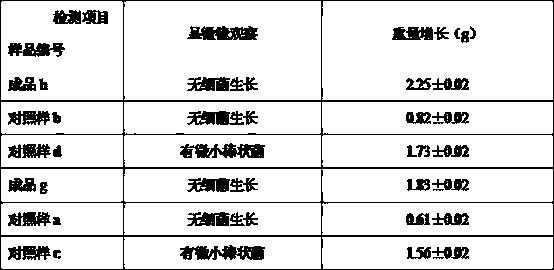Cryopreservation method of autologous skull
A preservation method, deep cryogenic technology, applied in the field of deep cryogenic preservation of autologous skull, can solve problems such as slow growth, rejection reaction, impact on skull activity, etc., and achieve the effect of increasing the speed of bone formation and promoting bone formation
- Summary
- Abstract
- Description
- Claims
- Application Information
AI Technical Summary
Problems solved by technology
Method used
Image
Examples
Embodiment
[0028] This embodiment discloses a method for cryopreservation of the same kind of skull, which adopts the following steps for preservation:
[0029] a. Pretreatment: the extracted skull block was processed in a 100,000 dust-level aseptic operation room, the skull bone flap was taken out from the donor, and the periosteum and other tissues on the bone flap were removed to obtain the skull a.
[0030] b. Washing: Repeatedly washing the skull a with physiological saline to remove the residual blood therein to obtain the skull b.
[0031] C. Pre-freezing: Put the skull b into a vacuum freeze dryer for vacuum freezing. The freezing temperature is -2°C. During this process, the moisture in the skull b decreases. After 1 hour of freeze-drying, turn off the vacuum freeze dryer, and the skull b Slowly recover the temperature in a vacuum freeze dryer to obtain the skull c.
[0032] d. Preparation of gel: Dissolve polyvinyl alcohol (PVA) in deionized water above 90°C to form a PVA aque...
experiment example
[0054] Experimental materials: 6 pieces of skull slices with an area of about 0.01㎡ taken from healthy corpses, 0.9% normal saline, polyvinyl alcohol (type 1799), 99% micron hydroxyapatite, calcium ethylate, and bovine serum albumin.
[0055] Skull slices were made according to the methods of Example, Comparative Example 1, and Comparative Example 2, respectively, to obtain finished product h, control sample b, and control sample d, and the other three skull slices were not post-processed in the above three methods to obtain Finished product g, control sample a, and control sample c, the above products are made into two parts, one part is directly used for microbial detection with a biological microscope, and the other part is weighed and placed in a petri dish with bovine serum albumin as a medium for culture for 5 ~7 days, half the amount of liquid was changed on the first day, and the full amount of liquid was changed every three days thereafter, and weighed again on the s...
PUM
 Login to View More
Login to View More Abstract
Description
Claims
Application Information
 Login to View More
Login to View More - R&D
- Intellectual Property
- Life Sciences
- Materials
- Tech Scout
- Unparalleled Data Quality
- Higher Quality Content
- 60% Fewer Hallucinations
Browse by: Latest US Patents, China's latest patents, Technical Efficacy Thesaurus, Application Domain, Technology Topic, Popular Technical Reports.
© 2025 PatSnap. All rights reserved.Legal|Privacy policy|Modern Slavery Act Transparency Statement|Sitemap|About US| Contact US: help@patsnap.com

